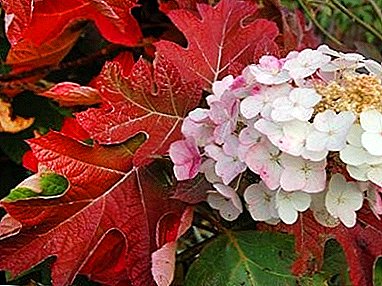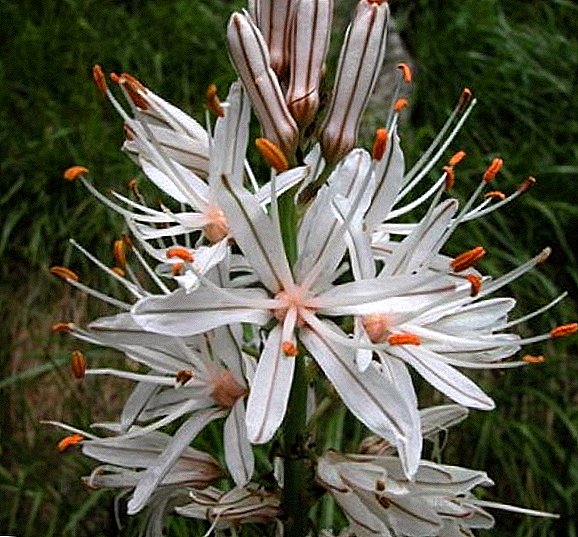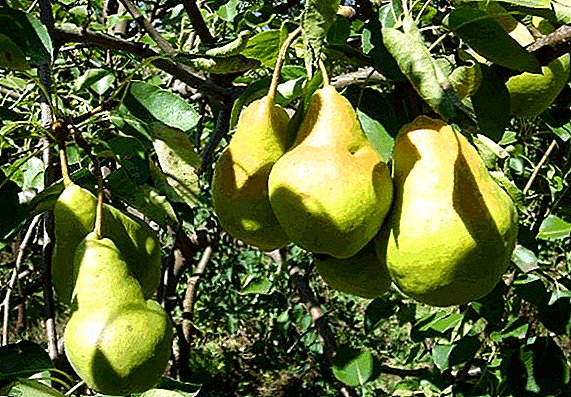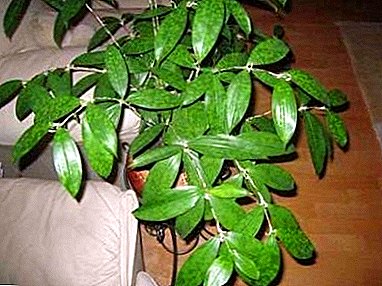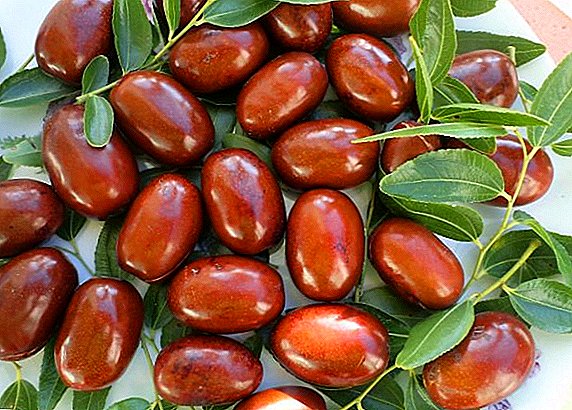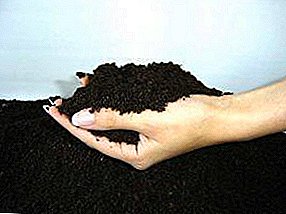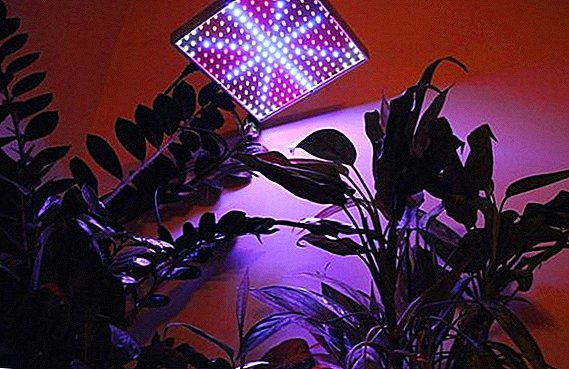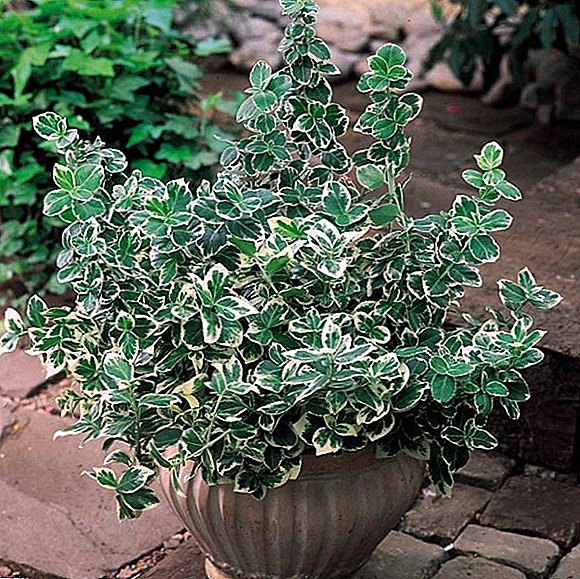 If you are looking for a lush and flowering plant, then an euonymus is unlikely to “catch your eye”, but for connoisseurs of evergreens, it is exactly what you need. Its flowers are small and inconspicuous, but it can still be a great addition to your garden or apartment "greenhouse". I would like to discuss the last option in more detail. How to care for the euonymus, how to properly plant and propagate it, you will learn by reading this article to the end.
If you are looking for a lush and flowering plant, then an euonymus is unlikely to “catch your eye”, but for connoisseurs of evergreens, it is exactly what you need. Its flowers are small and inconspicuous, but it can still be a great addition to your garden or apartment "greenhouse". I would like to discuss the last option in more detail. How to care for the euonymus, how to properly plant and propagate it, you will learn by reading this article to the end.
Types of room euonymus
 Most of the species of this plant (and there are about 140) are intended for cultivation in open ground, and only two of them are suitable for indoor breeding. Of course, now we mean Japanese euonymus and euonymus rootingthat are most commonly found in our homes.
Most of the species of this plant (and there are about 140) are intended for cultivation in open ground, and only two of them are suitable for indoor breeding. Of course, now we mean Japanese euonymus and euonymus rootingthat are most commonly found in our homes.
The first variant is distinguished by dark green leathery leaves of narrow elliptical shape with finely toothed edges. Their length varies from 3 to 8 cm, and flowers correspond to 1 cm (in each inflorescence from 10 to 30 pieces). The color of flowers is yellow-green, and orange or pink boxes act as fruits.
An euonymus rooting (another name is Forchun's euonymus) is a shrub reaching a height of 30-60 cm, with the branches expanding to three meters in length. In the nodes of the branches can take root. The leaves are leathery, small, have a dark green color and ovoid shape. Their size ranges from 2 to 6 cm.
Did you know? Virtually all species of euonymus are very poisonous, but wartwood euonymus and European euonymus are of the greatest practical importance, since their bark and stems contain gutta percha.
Rules for the care of euonymus in room conditions
The same plant growing in different conditions requires different attention. Therefore, room care for euonymus is different from the care of garden flowers.
Lighting and temperature
 In the matter of lighting, this plant is quite unpretentious and grows well both in light and in partial shade, although the first option is preferable. Often room euonymus requires good lighting throughout the year, which is why not all species can feel good on the north side of an apartment or house.
In the matter of lighting, this plant is quite unpretentious and grows well both in light and in partial shade, although the first option is preferable. Often room euonymus requires good lighting throughout the year, which is why not all species can feel good on the north side of an apartment or house.
Direct sunlight benefits the euonymus, but it is better that they fall on the leaves of the plant only in the morning or evening. However, species with variegated leaves that grow on the northern side, on the contrary, can lose their natural color, which is highly undesirable from an aesthetic point of view.
In winter, you can not hide the euonymus from sunlight, because direct sunlight does not have the same effect on him as in summer.
Another important aspect of plant care is indoor temperature. In summertime, it is somewhat easier to create suitable temperature conditions (the temperature should not rise above + 24-25 ° C), while in winter the temperature indicators are reduced to 8-10 ° C. Wintering at higher temperatures threatens the euonymus with loss of leaves.
At this time, you can take the plant to the heated balcony, although you should not allow too low temperatures. The wintering of a young euonymus (up to 3 years) in the conditions of a garden provides for the shelter of plants with spruce branches or dry foliage, and in order to prevent the roots of adult plants to freeze, sawdust or leaves are brought into their stem.
Did you know? There are several legends associated with the euonymus. The first one says that the witch raised a poisonous shrub because of resentment towards people, but later regretted her actions and made the plant a medicine. After that, she herself turned into a small gray bird - a robin (the poison of the berries does not affect them). According to the second legend, the euonymus appeared because of the wrath of the goddess Flora, who lost two jewels - a brooch and an earring. She did not begin to look for them, but simply turned them into an euonymus shrub: the flowers look more like brooches, and the berries look like earrings.
Requirements for the composition of the soil and its fertilizer
 It is no secret that the room euonymus differs from the garden version in terms of planting and care, but as for the ground, both species have similar preferences. For the full growth and development of this plant is perfect mix of sand and ordinary floral earth in a ratio of 1: 3. Ideally, the pH level should not be higher or lower than 6, and the acidity should remain neutral.
It is no secret that the room euonymus differs from the garden version in terms of planting and care, but as for the ground, both species have similar preferences. For the full growth and development of this plant is perfect mix of sand and ordinary floral earth in a ratio of 1: 3. Ideally, the pH level should not be higher or lower than 6, and the acidity should remain neutral.
Important! Too clayey soils in which sand needs to be applied is not the best option for indoor euonymus.However, if you want the plant to please you with its healthy appearance, beautiful foliage and abundant fruiting after planting an euonymus, then, in addition to the correct composition of the soil, it also needs the correct fertilizer, which is applied to the soil several times a year.
It is especially important to fertilize euonymus in the spring when the flower buds are actively forming. In this case, an excellent option for feeding is manure, previously diluted with water in a ratio of 1:10. As an alternative, you can use bird droppings, but only the concentration of the infusion will have to be reduced by half.
For indoor plants will be enough and complex mineral fertilizers, which are sold in finished form. They are made about once a month, and if the soil in the pot is characterized by high acidity, then it can be sprinkled with lime. In winter, the plant is not fertilized, as it is at rest and does not need regular feeding.
Regular watering and humidity
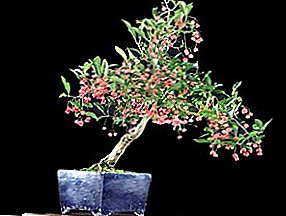 Probably one of the most important aspects of caring for a particular plant is the correctness of its watering. In the case of room euonymus, this procedure is performed using distilled water with a minimum amount of salts dissolved in it. In spring and summer, watering should be sufficiently abundant, but do not allow stagnant moisture in the root system.
Probably one of the most important aspects of caring for a particular plant is the correctness of its watering. In the case of room euonymus, this procedure is performed using distilled water with a minimum amount of salts dissolved in it. In spring and summer, watering should be sufficiently abundant, but do not allow stagnant moisture in the root system.
In autumn and winter, the euonymus is not so water-loving, and the number of waterings can be reduced. Plants that are on the insulated balcony at a temperature of from 5 to 10 ° C, you can hardly water. Although they do not part with their leaves, they are in a state of complete rest.
In addition to watering, a significant role is played by the humidity level in the room. Some flower growers claim that this indicator has no special meaning, and only spraying is useful. However, if the air in the room is very dry, and the temperature is high enough, this can cause abrasion of euonymus leaves.
It is leathery leaves that are responsible for the evaporation of a small amount of moisture by a plant, thanks to which it tolerates dry air of enclosed spaces well. To remove dust from the euonymus, experts advise from time to time to arrange his shower.
Cropping and crown formation
 Not only garden species, but also Japanese indoor plants need periodic pruning of shoots. Therefore, in order for the euonymus to be branched, it must be cut every spring, during the whole growing season. The stems of the plants are relatively soft and pliable, so that they can be given any shape (for example, to form in the form of bonsai).
Not only garden species, but also Japanese indoor plants need periodic pruning of shoots. Therefore, in order for the euonymus to be branched, it must be cut every spring, during the whole growing season. The stems of the plants are relatively soft and pliable, so that they can be given any shape (for example, to form in the form of bonsai).
Throughout the year, cleansing pruning can be carried out (as the shoots of the euonymus dry up). Also to be removed weak branches that take power from the plant.
Important! In early spring, young shoots can pinch, which will only enhance the branching and contribute to the formation of a dense crown.You can grow a plant to your taste, giving it almost any shape. The most common variant of room euonymus is cluster, when many branches depart from the root (the more there are, the thicker and more beautiful the crown turns out).
It is also possible to grow the plant as a stem tree: the trunk is bare from the bottom, and at the top it is supplemented with a thick crown, which is obtained as a result of correct and timely pruning and regular pinching to awaken dormant buds. If you try, you can even grow bonsai from the euonymus.
Euonymus toxicity
For experienced gardeners it is no secret that the euonymus is poisonous, which means that certain precautions should be observed when growing it. In fact, the danger is represented only by fruits, and even then only for children and animals, as an adult needs to eat a lot of berries for serious poisoning.
Shrub transplant
 Young plants (up to 3-4 years) need to be replanted every year, but for an adult euonymus it is enough to change the place of growth once every two or three years (if there is no expressed need, then it can be even less often).
Young plants (up to 3-4 years) need to be replanted every year, but for an adult euonymus it is enough to change the place of growth once every two or three years (if there is no expressed need, then it can be even less often).
The transplant procedure is performed in the following sequence: a drainage layer is poured at the bottom of a previously prepared new pot (it should not be much larger than the previous one), after which the ground itself is filled up. It is best to transplant into a mixture of turf and leafy land, mixed with coarse sand and humus (in the ratio 1: 2: 1: 1).
We must not forget that the soil for euonymus should be light and saturated with micronutrients. If you decide to transplant the plant in the open ground, it is best to perform a transplant in the spring.
Did you know? Euonymus is successfully used in medicine, and the medicinal raw material is not only bark, but also leaves, branches and even seeds. This plant has insecticidal, laxative, antimicrobial, antihelminthic, diuretic and antiparasitic action.
Reproduction of euonymus at home
Most often, the breeding of Euonymus occurs in a vegetative way (green cuttings or dividing the bush), but in the case of indoor plants, seed reproduction is also often encountered.
Dividing bush
 In most cases, by dividing the bush dwarf varieties of euonymus are propagated. This contributes to the superficiality and horizontal bedding of the root system, which gives a new growth every year. All that is required of you is to carefully separate the young shoots from the mother bush (together with a part of the rhizome), and then prune them to 2/3 of the length and plant them in another pot. This procedure is absolutely painless for euonymus.
In most cases, by dividing the bush dwarf varieties of euonymus are propagated. This contributes to the superficiality and horizontal bedding of the root system, which gives a new growth every year. All that is required of you is to carefully separate the young shoots from the mother bush (together with a part of the rhizome), and then prune them to 2/3 of the length and plant them in another pot. This procedure is absolutely painless for euonymus.
Cuttings
When cutting eosklet, you need to choose cuttings of dina no more than 6-10 with one internode. After that, the cut should be dipped in a special phytohormone powder and put the cuttings in the peat-sand mixture. Watering shoots and covering them with a film, you have to wait 2-2.5 months, and as soon as they take root, they can be transplanted to a permanent place.
Important! Cuttings better in the first half of summer.
Seeds
 Often room euonymus is propagated by seeds, which are formed in the fruit-boxes after flowering plants. Within 3 months they are stratified at a temperature of about +3 ° C. This time is enough for most seed to burst the seed coat. After that, they are cleaned from prisemyannikov and placed in a solution of potassium permanganate (0.5%).
Often room euonymus is propagated by seeds, which are formed in the fruit-boxes after flowering plants. Within 3 months they are stratified at a temperature of about +3 ° C. This time is enough for most seed to burst the seed coat. After that, they are cleaned from prisemyannikov and placed in a solution of potassium permanganate (0.5%).
Sow the seeds should be in shallow grooves (about 2 cm), and after 2-3 weeks you will see the first shoots.
Diseases and pests of room euonymus, how to deal with them
Most often, the room euonymus is threatened by a spider mite, aphid, and a shield. Spider mites are practically invisible on the leaves, and they are only detected when the leaves turn yellow and fall off. In addition, a characteristic sign of the presence of ticks is the curvature of young leaves.
Knowing the possibility of such an adversity, it is necessary to maintain high humidity in the room (especially on hot days), occasionally washing the leaves under a warm shower, you can even use shampoo or soap. In extreme cases, you will have to resort to the help of acaricides, but over time, the mites become resistant to them.
 Delivers a lot of trouble and shield (there is even a separate species - earthen shield). After "sticking" to the piece of paper, it leaves a yellow spot on it, which increases over time and spoils the appearance of the plant. In the fight against it will help systemic insecticides - Aktara or Konfidor, as well as removing pests from the foliage with a sponge or cotton swab.
Delivers a lot of trouble and shield (there is even a separate species - earthen shield). After "sticking" to the piece of paper, it leaves a yellow spot on it, which increases over time and spoils the appearance of the plant. In the fight against it will help systemic insecticides - Aktara or Konfidor, as well as removing pests from the foliage with a sponge or cotton swab.
As a preventive measure on the plant put foam soap and leave it for an hour. After that, you need to thoroughly wash the leaves under a warm shower.
Important! After the procedure, the euonymus must be left in the bathroom for a few more hours.It is unlikely that you will be able to completely protect the euonymus from diseases of shrubs, but with proper care you can minimize the risk of pests.


